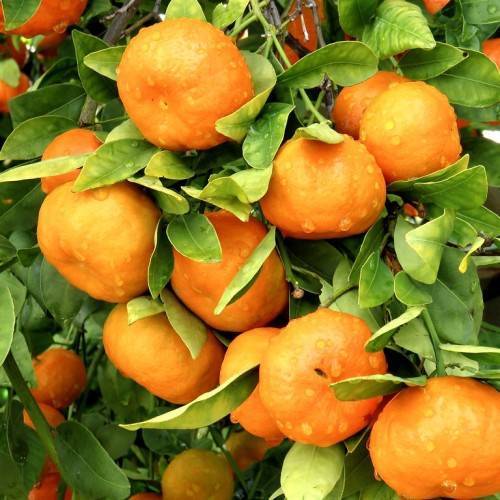
navel orange
Citrus sinensis 'Trovita'
Cycle:
Perennial
Watering:
Frequent
Hardiness Zone:
9 - 10
Flowers:
Flowers
Sun:
Full sun
Fruits:
Fruits Ready In Winter
Edible:
Yes
Leaf:
Yes
Growth Rate:
High
Maintenance:
Moderate
Drought Tolerant:
Yes
Care Level:
Medium
watering
Water your navel orange tree (Citrus sinensis 'Trovita') 2 to 3 times a week in the summer, in the first year of planting, and once a week in the winter. During the first 2 years, water the tree deeply once per week to saturate the soil. After the tree is established, reduce the frequency of watering to once every 2 weeks, allowing for a deep but thorough watering. During periods of drought, water the tree more often, but not more than once every 3 days. It is important to water the orange tree deeply, but not too frequently. In general, navel orange trees require about 10 to 15 gallons of water a week in moist to wet conditions and up to 25 gallons in periods of drought.
sunlight
Navel oranges need a considerable amount of sunlight to thrive. During the growing season, they should receive full sun or at least 8 hours of direct sunlight daily. In the winter, they should still receive as much sunlight as possible, though they may require slightly reduced exposure. They should be positioned in an area that receives bright, indirect light the remainder of the day. If the orange tree is grown in an area that doesn’t receive enough sunlight, its growth and fruiting will be affected.
pruning
Because Navel orange (Citrus sinensis 'Trovita') have a natural tendency to grow into a plump and round shape, they do not require significant or regular pruning. Light pruning or the periodic removal of dead branches can be done to improve air circulation and provide the optimum development of the fruit. The best time for pruning is in late spring and early summer when the branches are still small to avoid large wounds. Pruning cuts should be angled downward and overhead pruning should be avoided. Never prune more than 1-third of the canopy away in any 1 season, and ensure the remaining branches are uniformly distributed.
Season
Hardiness Map
Similar Plants
Can be picky about humidity when first acclimating to your household. Otherwise a very easygoing reliable grower.
